Keeping warm without a duvet.
Getting through these long and often very cold winter nights poses problems for many small birds. Some like long tailed tits and wrens roost communally, physically huddling up together.
Wild Update - January 2024
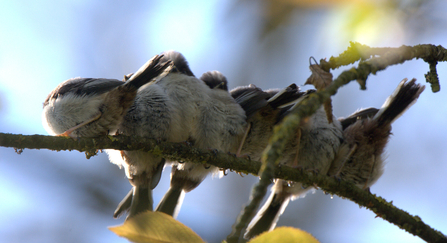
WildNet - Clive Nichols
Wrens will gang together in bird nest boxes - as many as 40 have been counted coming out of one box!
Treecreepers will roost communally but also singly by digging cavities in the ultra-soft bark of redwood trees and squeezing into them.
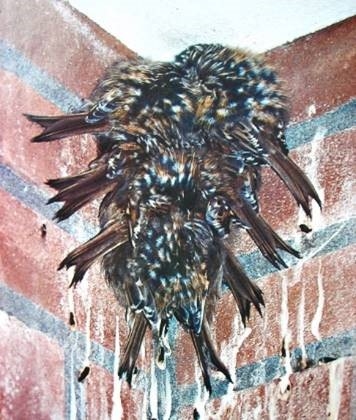
Treecreepers roosting in building
Pied wagtails move either into (warmer) towns and roost in street trees or find overnight shelter in industrial buildings.
There’s still a sizeable wagtail roost in the Enthoven works at Darley Dale and many years ago, I witnessed over 1000 wagtails roosting in the (very warm) boiler house of Willington Power Station before it was demolished.
And then of course there are starlings and their extraordinary murmurations.
Derbyshire doesn’t appear to have any sizeable murmurations this winter but check out this website if you want to experience one and are prepared to travel out of county: https://www.starlingsintheuk.co.uk/ . Be sure to take a hat if you go! If not there are plenty of mesmerising videos on YouTube.
Moonwort
One of our smallest ferns, barely five centimetres tall, is moonwort, Botrychium lunaria, so named due to the half-moon shape of the tiny ‘fronds’. This scarce plant can even grow on lead spoil heaps on the limestone but is so small it is easily missed.
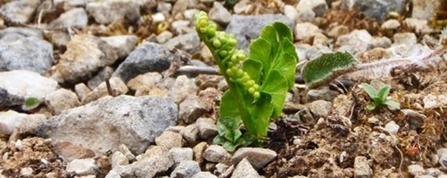
Moonwort with its half moon shaped fronds
Hardwick Hall has a very accurate woven image of moonwort in its collections, an image which appears in Richard Mabey’s excellent Flora Britannica.
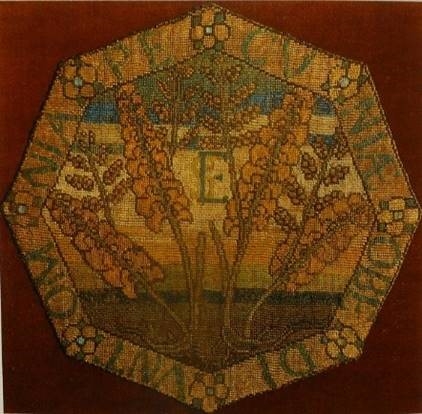
Moonwort depicted on a woven canvas at Hardwick
Head starting
Head starting is a fashionable method used either in re-introduction projects or to bolster struggling species.
It involves taking the eggs of ground nesting birds, incubating them and keeping the chicks in enclosures until they are big enough to be released, thereby hugely increasing their chances of survival.
This is well worth doing for vulnerable species which suffer high levels of nest and chick predation, birds such as the common crane, the great bustard, the curlew, the black tailed godwit and most recently the ruff, all of them ground nesters.
Ruffs are fascinating birds.
The males grow plumes on their heads and necks in various colour forms and then display together at a lek:
Ruff flock of birds in spring. Displaying males (youtube.com)
I’ll write more about lekking birds like ruff and black grouse (which used to breed in the county) next week.

Male ruff displaying
The value of conifers
While the gloomy, lifeless plantations of non-natives are rightly demonised, conifers do have some important benefits for wildlife.
Goshawks, sparrowhawks and long eared owls nest in them, red squirrels do better in them than in deciduous woods and crossbills are entirely dependent on coniferous seeds as their only food source.
Like waxwings, crossbills are an ‘irruptive’ species, moving long distances to find new food sources when the crop of cones fails.
Their crossed mandibles look like some genetic mistake but in fact are the perfect tool for extracting the tiny seeds from tightly formed cones.
There’s a small flock in Matlock Forest at the moment, likely to be local birds rather than irruptive ones.
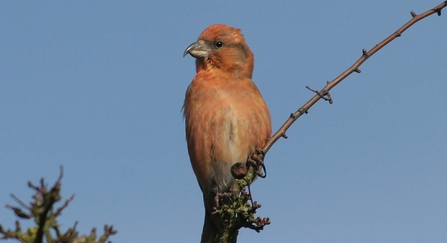
WildNet - Margaret Holland
Invertebrate reintroductions
While much of the interest in reintroducing species that have disappeared from the UK focuses on vertebrates, mainly birds and mammals, a lot of work has been put in to bringing back rare invertebrates and a few plants too.
The faunal species involved include the large copper and large blue butterflies, the medicinal leech, the white faced darter dragonfly and the fen raft spider to name but a few.
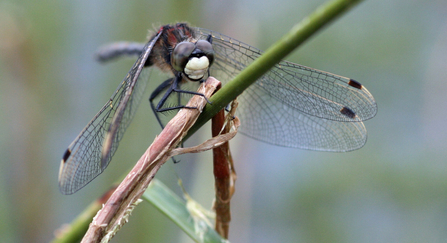
WildNet - Vicky Nall
No doubting its identity!
The white faced darter used to occur at a single pond between Matlock and Chesterfield in the 1980s. Then run off from a road was diverted into the pond altering its acidic chemistry and the dragonfly disappeared. It would be good to have it back!
In the botanical world, clandestine attempts have been made to bring back the exotic looking ladies slipper orchid to the hills around Matlock where it once grew. I gather that this rare plant, much sought after by orchid afficionados, has not yet established itself.
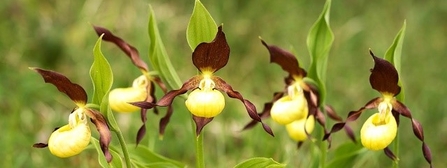
Ladies slippers at Gait Barrows NNR in Cumbria where they can be seen and photographed
